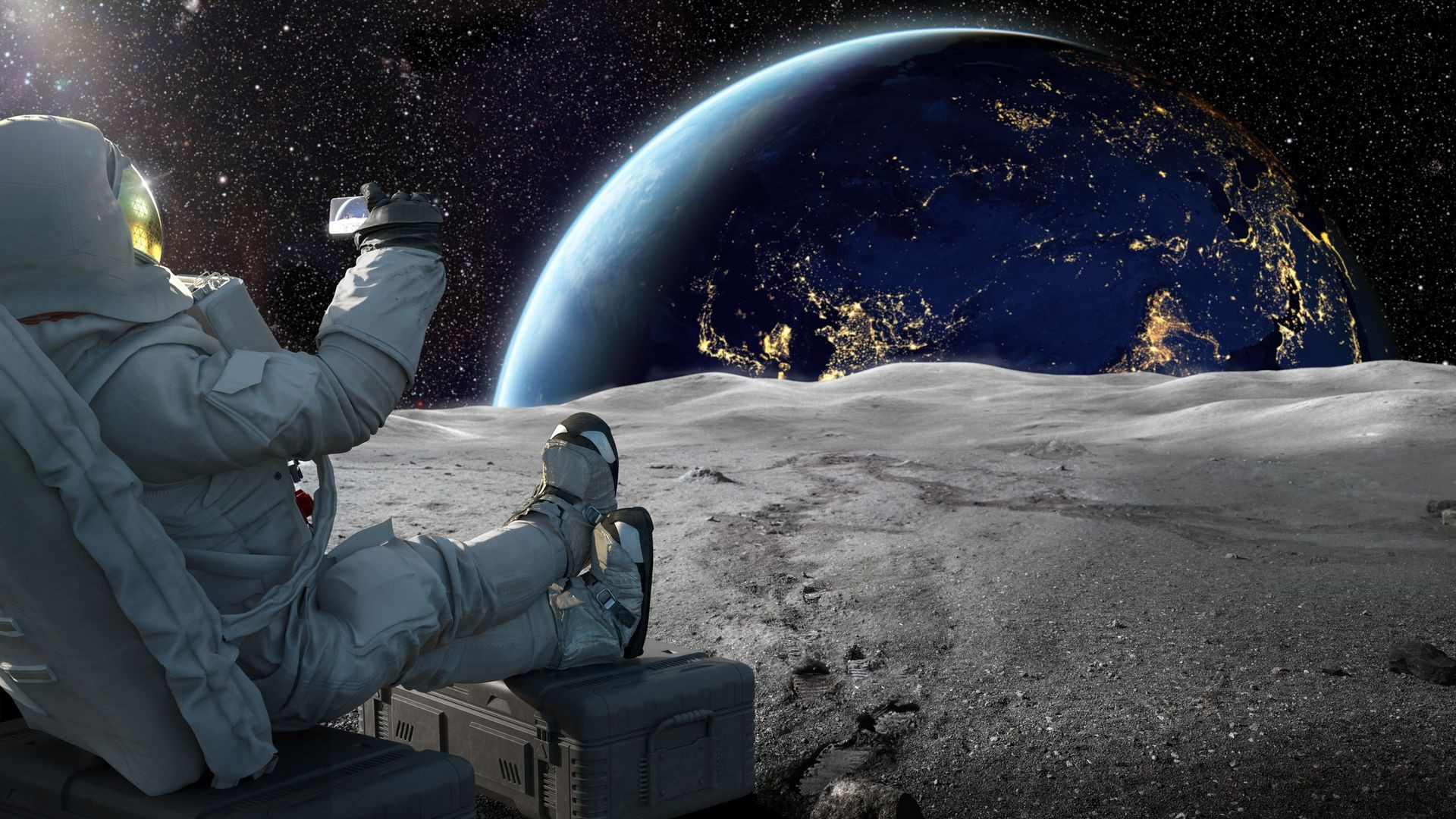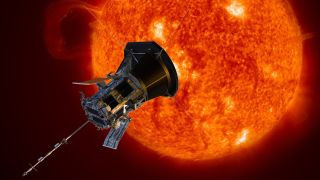If you’ve ever gazed up at the moon, Earth’s celestial companion, you might have wondered: How long would it actually take to get there? The journey to the moon, while seemingly a quick hop in our imaginations, is a complex endeavor that depends on a multitude of factors, most crucially the technology propelling us through space.
The most common answer, using current rocket technology, is that it takes approximately three days to reach the moon. However, this isn’t a fixed number. The actual travel time can fluctuate based on the positions of Earth and the moon, the specific path chosen for the spacecraft – whether it’s a direct landing mission or just a flyby – and, most importantly, the type of propulsion system employed.
For instance, NASA’s New Horizons probe, while on its grand voyage to Pluto, zipped past the moon in a mere 8 hours and 35 minutes, achieving the fastest lunar flyby to date. On the crewed mission front, Apollo 8 holds the record for the quickest journey to lunar orbit, arriving in just 69 hours and 8 minutes after launch.
Let’s delve deeper into the fascinating world of lunar travel times, exploring the various factors influencing the duration of a trip to the moon and examining the timelines of past lunar missions.
Understanding the Earth-Moon Distance
Before we calculate travel times, it’s essential to understand the distance we’re covering. The average distance between Earth and the moon is approximately 238,855 miles (384,400 kilometers), according to NASA. This distance, however, isn’t constant. The moon’s orbit around Earth is not perfectly circular but elliptical.
 Illustration of the Earth and Moon with distance markers, highlighting the elliptical orbit and varying distances.
Illustration of the Earth and Moon with distance markers, highlighting the elliptical orbit and varying distances.
At its closest point to Earth, known as perigee, the moon is about 226,000 miles (363,300 km) away. At its farthest point, apogee, it stretches to about 251,000 miles (405,500 km). This variation in distance plays a role in mission planning and trajectory calculations.
Traveling to the Moon at the Speed of Light
To put the distances into perspective, let’s consider the speed of light, the fastest thing in the universe. Light travels at an astounding speed of roughly 186,282 miles per second (299,792 km per second). If we could travel at the speed of light, how long would it take to reach the moon?
- Closest point (Perigee): Approximately 1.2 seconds
- Farthest point (Apogee): Approximately 1.4 seconds
- Average distance: Approximately 1.3 seconds
While practically instantaneous, this comparison highlights the immense distances involved in space travel, even to our nearest celestial neighbor.
Lunar Travel Time with the Fastest Spacecraft
Currently, the fastest spacecraft ever built is NASA’s Parker Solar Probe. This probe, designed to study the sun, has achieved incredible speeds as it orbits closer and closer to our star. In November 2021, it reached a top speed of 101 miles (163 kilometers) per second, or a staggering 364,621 mph (586,000 kph), during its tenth close flyby of the sun. NASA anticipates that by December 2024, as it approaches within 4 million miles of the sun’s surface, its speed will exceed 430,000 miles per hour (692,000 km/h)!
 Graphic depiction of NASA's Parker Solar Probe approaching the Sun, illustrating its high-speed trajectory.
Graphic depiction of NASA's Parker Solar Probe approaching the Sun, illustrating its high-speed trajectory.
If we could somehow redirect the Parker Solar Probe for a direct trip to the moon, traveling at its 10th flyby speed of 101 miles per second, the journey would take:
- Closest point: Approximately 37.2 minutes
- Farthest point: Approximately 41.4 minutes
- Average distance: Approximately 39.4 minutes
Even at the blistering speeds of the Parker Solar Probe, a trip to the moon still takes a considerable amount of time, highlighting the challenges of space travel.
Driving to the Moon: A Humorous Perspective
For a more relatable, albeit entirely impractical, comparison, let’s imagine driving to the moon. If we could build a road to the moon and drive at a constant speed of 60 mph (96 km/h), how long would it take?
 Humorous image of a red toy car parked against a grey wall featuring drawings of spaceships and planets, symbolizing the concept of driving to the moon.
Humorous image of a red toy car parked against a grey wall featuring drawings of spaceships and planets, symbolizing the concept of driving to the moon.
At an average distance of 238,855 miles, driving at 60 mph would take approximately 166 days – over five months of continuous driving! This whimsical comparison underscores the vastness of space and the impressive speeds required for space travel.
Expert Insights on Lunar Travel Time
To gain further insights, we consulted Michael Khan, a Senior Mission Analyst at the European Space Agency (ESA), for some frequently asked questions regarding travel times to the moon.
How long does it typically take to get to the moon, and what factors influence this duration?
Michael Khan explains: “The time it takes to travel between celestial bodies largely depends on the energy we are willing to expend. In space travel, ‘energy’ refers to the effort from the launch vehicle and the spacecraft’s maneuvers, which translates to propellant usage. Spaceflight is essentially about the efficient management of energy.”
He further elaborated on common lunar transfer methods:
-
Hohmann Transfer: Often considered the most energy-efficient transfer, suitable for journeys lasting a few days, especially under certain launch constraints. The Hohmann transfer to the moon typically takes around 5 days, with slight variations due to the moon’s eccentric orbit and changing Earth-moon distance.
-
Free Return Trajectory: A safer, though more energy-intensive, option favored for manned missions like the Apollo program. This trajectory is designed so that if the spacecraft’s engine fails during lunar orbit insertion, the moon’s gravity will naturally redirect it back to Earth, ensuring crew safety even with propulsion issues. Free Return trajectories usually take about 3 days to reach the moon.
Why are travel times significantly longer for spacecraft intending to orbit or land on a celestial body, like Mars, compared to flyby missions?
Khan clarifies: “Orbiting or landing adds substantial constraints to mission design. Orbiters require considerable propellant for orbit insertion, while landers need heat shields to withstand atmospheric entry. These factors limit the spacecraft’s arrival velocity, often necessitating Hohmann-like trajectories, which, while energy-efficient, extend travel times.”
The Complexity of Calculating Lunar Travel Times
Simple distance and speed calculations don’t fully capture the complexities of lunar travel. The Earth and moon are not stationary; they are constantly moving. The moon’s distance from Earth varies due to its elliptical orbit. Space mission engineers must account for the moon’s position at the spacecraft’s arrival, not its position at launch. It’s like aiming a dart at a moving target from a moving vehicle.
Furthermore, mission objectives significantly impact travel time. Missions intending to land on the moon or enter lunar orbit cannot travel at maximum speed. They must decelerate upon arrival to execute orbit insertion or landing maneuvers safely. Therefore, maximizing speed is not always the primary goal; controlled arrival is crucial.
Historical Moon Mission Travel Times
Over 140 missions have been launched to the moon, each with unique objectives, routes, and travel times. The iconic Apollo 11 mission, the first crewed lunar landing, took four days, six hours, and 45 minutes to reach the moon. Apollo 10, while not landing, still holds the record for the fastest speed achieved by humans returning from the moon, reaching 24,791 mph (39,897 kph) relative to Earth.
NASA’s Artemis 1 mission, the first uncrewed test flight of the Orion spacecraft and Space Launch System rocket, reached the moon on flight day six. It performed a close lunar flyby, passing just 80 miles (130 km) above the lunar surface to utilize a gravitational assist for entering a distant retrograde orbit around the moon.
Further Resources
To explore the intricacies of space navigation and timekeeping, NASA provides valuable resources. Learn more about NASA’s navigation technology and the importance of precise timing in space missions. For a historical perspective, an article by Gwendolyn Vines Gettliffe from MIT delves into the remarkable navigation techniques used to reach the moon with precision before the advent of GPS technology.
Bibliography
- Hatfield, M. (2021). Space Dust Presents Opportunities, Challenges as Parker Solar Probe Speeds Back toward the Sun – Parker Solar Probe. [online] blogs.nasa.gov. Available at: https://blogs.nasa.gov/parkersolarprobe/2021/11/10/space-dust-presents-opportunities-challenges-as-parker-solar-probe-speeds-back-toward-the-sun/.
- NASA (2011). Apollo 8. [online] NASA. Available at: https://www.nasa.gov/mission_pages/apollo/missions/apollo8.html.
- www.rmg.co.uk. (n.d.). How many people have walked on the Moon? [online] Available at: https://www.rmg.co.uk/stories/topics/how-many-people-have-walked-on-moon.
Join our Space Forums to continue the space conversation on the latest missions, night sky events, and more! If you have news tips, corrections, or comments, please contact us at: [email protected].
Get the Space.com Newsletter
Stay informed about breaking space news, rocket launch updates, skywatching events, and more!
Daisy Dobrijevic
Reference Editor, Space.com
Daisy Dobrijevic is a Reference Editor for Space.com. She is passionate about space, with a special interest in solar activity and space weather.
